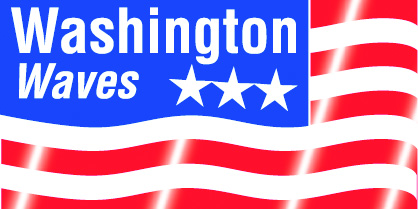Washington, D.C.—President Donald Trump does not hold back when promoting a trade agreement in principle with China, even though he also makes it clear it was only “Phase 1.”
“We made a fantastic deal,” Trump said, linking it to U.S. stock market gains.
“We’re going to be selling to China about $50 billion worth of farm agricultural products.”
U.S. Trade Representative Robert Lighthizer said biotechnology issues have been addressed, making it much easier for farmers to ship their products to China.
Trump said Phase 1 also will deal with financial services and intellectual property.
In a timeline laid out by the president and Treasury Secretary Steven Mnuchin, signatures making the agreement official will have to wait until Trump and Chinese President Xi meet in Chile for an economic summit in November.
Meanwhile, Trump said the tariff hikes scheduled to kick in on October 15 will be “held in abeyance,” subject to the final agreement.
In separate statements, both Mnuchin and Lighthizer said the tariff hikes scheduled to take effect in December were not impacted by the Phase 1 agreement, and will be subject to a later decision by Trump.
During the announcement in the Oval Office, Chinese Vice Premier Liu He, his nation’s top trade negotiator, also gave a positive update on the ongoing talks.
“We very much agree that to get the China-U.S. economic relationship right, it’s something that is good for China, for the United States, and for the whole world,” Liu said.
“And we are making a lot of progress toward a positive direction.”
Both men singled out the recent purchases of soybeans that China already has made.
In response to the announcement, however, the American Soybean Association took a wait-and-see stance as it expressed hope the partial agreement will be a step toward rescinding tariffs, restoring certainty and stability to the soy industry.
House Speaker Nancy Pelosi (D-Calif.) questioned the overall significance of the deal and expressed the same concerns about a trade agreement with China that Democrats have had about the pending agreement with the U.S., Mexico and Canada (USMCA) and those focused on enforcement.
“Are they really going to honor any commitments that they make?” she asked.
“Buying farm products, that’s good. But what about the other considerations that hurt America’s manufacturing base?”
2020 Appropriations
Hopes that a stalled 2020 appropriations process would be revived quickly appeared to go unfulfilled following a two-week congressional recess, and that was before yet another White House meeting—this one on Syria—imploded with President Trump and top Democrats later exchanging unusually harsh words as they blamed each other for the failed session.
Trump and Pelosi accused each other of experiencing a “meltdown.”
Shortly before going to the White House, Senate Minority Leader Chuck Schumer of New York told reporters he and other Democrats were still waiting for Republicans to negotiate on the 302b allocations, which set the spending limits on the 12 individual appropriations bills, and not try to ram through billions of dollars for the border wall sought by Trump.
“They know that’s not going to happen,” Schumer said.
Serious negotiations on the spending bills did not take place during the last two weeks, he said.
Before leaving the Capitol, lawmakers reached a bipartisan, bicameral agreement on a stopgap measure to keep the federal government open and funded through November 21.
That gives appropriators breathing room before the next shutdown deadline, but prospects of impeachment among House Democrats appear to be growing by the day.
It remains uncertain exactly how much that inquiry will impact the day-to-day decisions on governing.
Contract Relief
The Department of Homeland Security (DHS) granted limited extraordinary contract relief to Eastern Shipbuilding Group (ESG) of Panama City, Fla., on the contract for the Offshore Patrol Cutter (OPC), which the agency said remains one of its highest acquisition priorities.
ESG submitted a request for the contract relief in June after its facilities sustained significant damage from Hurricane Michael in 2018.
“After review of the request for relief, Acting Secretary of Homeland Security Kevin K. McAleenan made the decision to grant extraordinary contract relief limited to the first four hulls on the basis that ESG’s performance on the OPC contract is vital to the national defense,” DHS stated.
“The Coast Guard will immediately transition to a follow-on competitive contract for the remaining OPC program of record.”
DHS added the decision will ensure critical capabilities for the nation’s homeland security and deliver service as expeditiously and responsibly as possible.
Speaking several days later at the Center for Strategic and International Studies, Coast Guard Commandant Karl Schultz said that the Category 5 hurricane and contract relief would cause a delay of up to 12 months on the first ship, less going forward for subsequent ships.
Schultz said staying with ESG, even with the contract relief, remained a quicker route for the OPC program.
DHS Leadership
The Department of Homeland Security, which includes the Coast Guard and Customs and Border Protection, lost another leader.
In a tweet, President Trump announced that acting DHS Secretary Kevin McAleenan was leaving to spend more time with his family and go to the private sector.
Trump indicated he would act within days to name a new acting DHS secretary, adding he has “many wonderful candidates.”
PDL Ranges
Radio-activated, solar-powered Precision Directional Light (PDL) ranges have been established to support larger ships, known as post-Panamax vessels, now navigating into U.S. ports, according to the Coast Guard.
Following the Panama Canal’s recent expansion, the Coast Guard explained, supertankers that did not fit the original canal are now visiting East Coast and Gulf Coast ports.
Part of the U.S. Aids to Navigation (ATON) System, a PDL range indicates a specific bearing by lining up a pair of lights or dayboards, a blog posting explained, adding typically the bearing is the centerline of a channel.
Those white, red and green lights let mariners know where they are in the channel, the posting stated.



